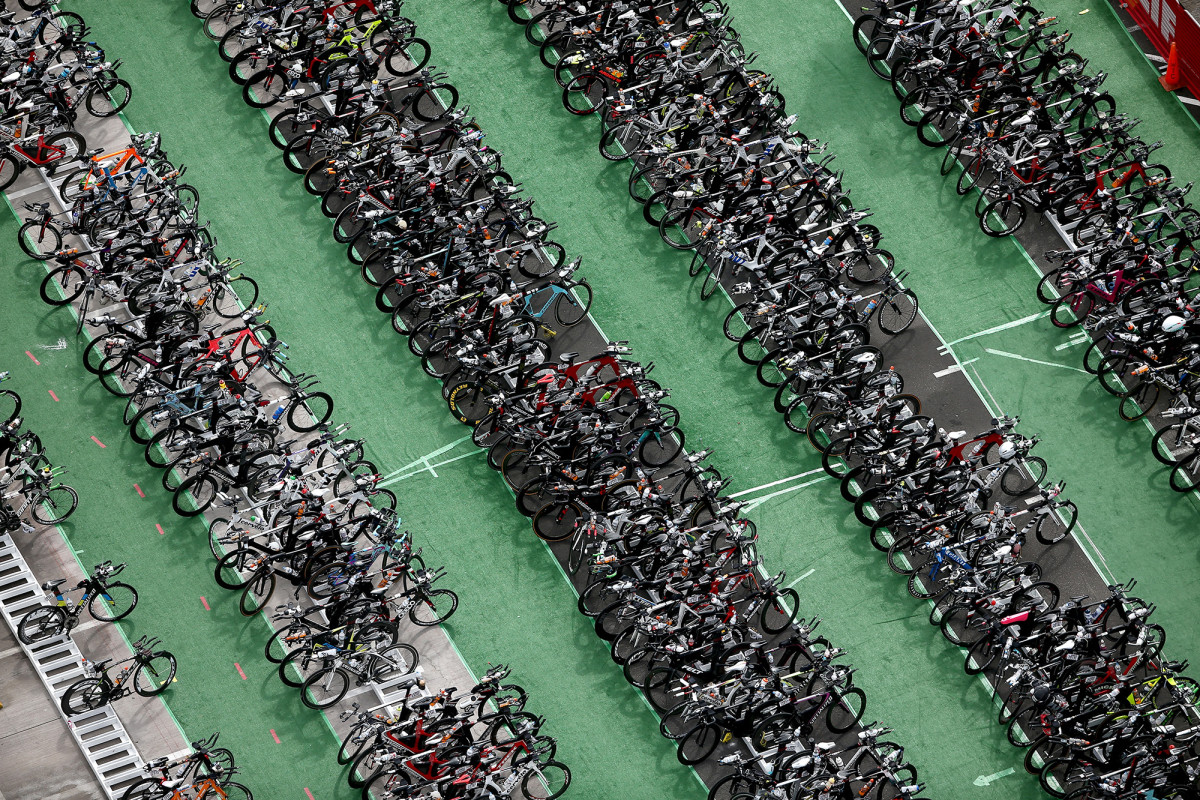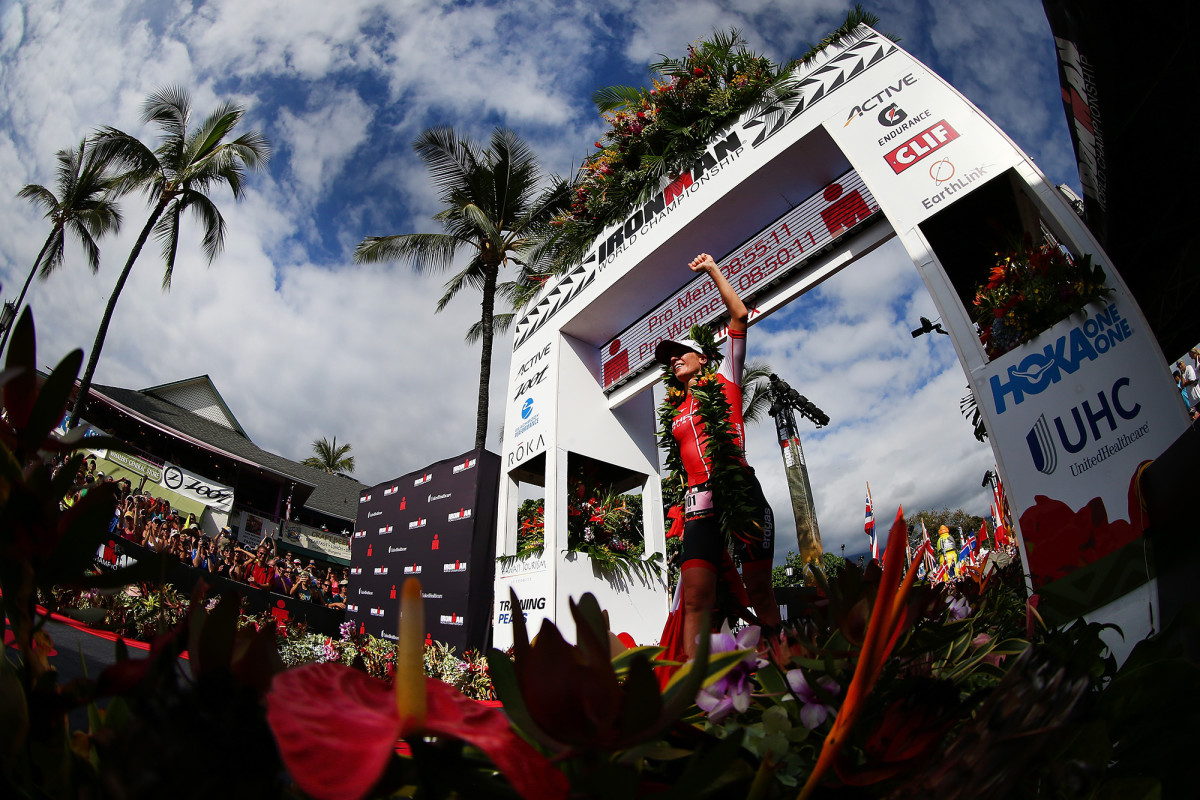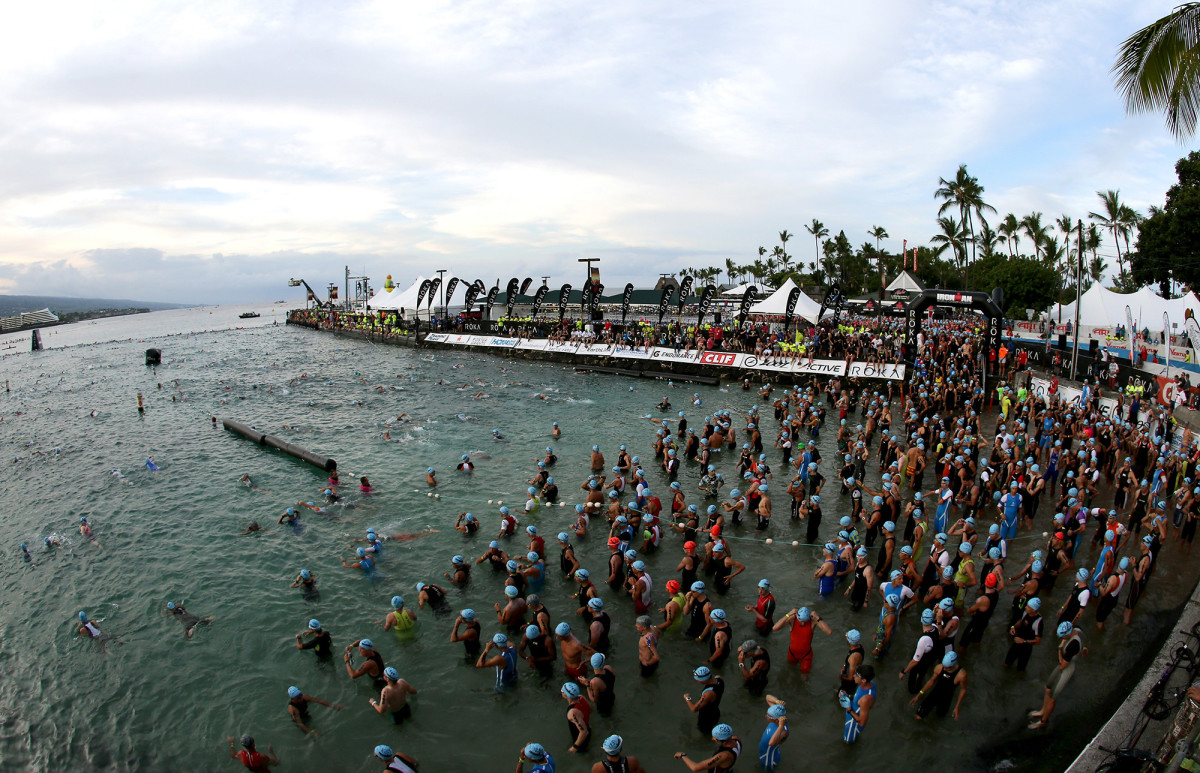Everything You Need to Know About the 2017 Ironman World Championships in Kona

KAILUA-KONA, HAWAII — As over 2,400 of the world’s most elite athletes enter the waters of Kailua Bay on Oct. 14, they’ll have their hearts set on a prize that goes far beyond stepping—or crawling—over a finish line. When their bodies tell them “no,” their inner drive to accomplish a goal that’s far beyond any expectation mankind ever intended, will continuously strum a “yes” chord. They simply yearn to become “one of the ones.”
For the competitors in the 2017 Ironman World Championship, their backgrounds are vast and furious, ranging from world champion professionals, to those who are fighting Stage 4 pancreatic cancer and just looking for the race “to help close the door gracefully, with passion, having lived a wonderful life,” such as Carlsbad, Calif., native Mike Levine.
The race’s 2.4-mile swim through the ever-changing currents of Kailua Bay, 112-mile bike while being surrounded by heat-soaking lava rock and 45 mph head- and cross-winds, and 26.2-mile marathon in shirt-soaking humidity, makes the world championship arguably the planet’s most difficult single-day sporting event.
“Last year was my toughest race here on the island,” says Germany’s Jan Frodeno, who is looking for his third consecutive victory on the Big Island. “It was a constant fight—with me and the elements. At the finish line, I was so happy that it was over. It took a long while [before] I was able to enjoy it.”

Interestingly, in 2015, Frodeno also captured a piece of triathlon history, becoming the first Ironman competitor to capture the sport’s triple crown—he previously won gold at the 2008 Beijing Olympics and was victorious at the 2015 Ironman 70.3 World Championship.
“My goal is always to win,” Frodeno says. “As a two-time champion, the people are also expecting it. But winning is never easy—the pressure is on me. I am fighting not to lose, and perform at my very best.”
But looking to grab the tails of Frodeno will be countryman and 2014 champion Sebastian Kienle. The duo was arm-to-arm for the first 5 miles of last year’s marathon, before Frodeno broke away and led Kienle by one minute, 30 seconds midway through the run.
Look no further than last year’s women’s world champion, Switzerland’s Daniela Ryf, who is aiming for a three-peat. In 2016, the Swiss sensation set a new Ironman World Championship women’s course record—a stat set in 2013 by second place finisher and three-time world champion, Australia’s MirindaCarfrae.
“I [would] like to go out there and show the best performance my body can offer this year,” Ryf says. “There are many young women racing in Kona for the first time, as well as some fast swimmers, so I don’t expect to be up front from the start—but certainly will push to catch [them] on the bike.”

Ryf has been struggling with a back injury since the spring, but appears confident that her mind and body are heading on the right pavement.
“My year has been a bit of a challenge, [but] I am happy with how I achieved to overcome with the help of my coach,” she says. “I spent the last three weeks training in Maui and am happy with my progress—I put all I had in these last months.”
But for Ryf, the threat of Carfrae and her explosive marathon skills are eliminated—for this year, at least. Carfrae gave birth to a baby girl, Isabelle, during the offseason and will focus on raising her daughter for the near future. But she’ll still be strutting around Kona—this time as a spectator, in support of her husband, Timothy O’Donnell, who was the top U.S. world championship finisher in 2013 and ‘15.
ALOHA! Here’s a look at what’s up with Saturday’s #IMKona. 🏊🚴♀️🏃♀️ @SInow @SI_Edge pic.twitter.com/DUGjRtRNsO
— Brian T. Dessart (@briandessart) October 12, 2017
“It’s been a surreal year having a baby, without the pressure of racing,” Carfrae says. “I’ve raced full time since my early 20s, and when [I] first fell pregnant I was a little lost, without having the day-to-day structure and laser focus toward a specific goal. But it didn’t take long for me to let go as a professional athlete and enjoy the amazing process of a growing baby. I look forward to being back next year, but will enjoy Kona [this year] as a spectator and new mom.”
And now enter Heather Jackson. In 2015, the American made her world championship pro debut was the first stateswoman to cross the finish. But wait, there’s more. Last year, she encored by finishing third and became the first U.S. woman to podium in a decade.
“Last year I was absolutely ecstatic to earn myself a podium position behind two of the most dominant Ironman distance female triathletes of the past four to five years,” Jackson says. “You dream of days coming together like that, and it didn’t sink in for a few months that I earned third in the world.”

So how does Jackson plan on molding her own, unique triathlon hat trick? Simple. Preparation.
“I’m pretty excited right now,” she says. “I’ve had another whole year of practicing the longer Ironman distance—I feel like I know it better. I’m more comfortable with the distances and times the disciplines take, and my prep couldn’t have gone much better. I’m excited to see where that training can take me on race day.”
The Ironman World Championship was inaugurated Feb. 18, 1978, after combining Hawaii’s three toughest endurance races—the 2.4-mile Waikiki Roughwater Swim, 112-mile Around-O’ahu Bike Race and 26.2-mile Honolulu Marathon—and has grown from a competitor field of 15.
This year, approximately 260,000 professional and age group athletes attempted to qualify for the Ironman World Championship either through worldwide Ironman (full-distance) or Ironman 70.3 (half-distance) races, or by legacy or lottery. This year’s world championship field represents 66 countries, regions and territories on six continents—the largest international athlete field in Ironman World Championship history. Geographically, it’s most represented by 741 U.S. athletes, from 48 states, with the largest number coming from California, 113; Texas, 58; Colorado, 53; Hawaii, 50; and New York, 49. Internationally, Australia boasts 234 athletes, followed by Germany, 217; and Great Britain, 150.
“The motivation is to be the first running down Ali’i Drive toward the finish line,” Frodeno says. “I am striving for the perfect race, which I’ve never had here in Kona. But maybe this is the challenge—that you will never have a perfect race, and the guy with the strongest head will win.”
2017 IWC facts and figures, provided by Ironman
• 72% of participants (1,762 athletes) are male.
• 28% of participants (698 athletes) are female.
• 43 is the average age of registrants this year.
• Hiromu Inada (Japan) is the oldest participant at 84, while Paul Lennart (Denmark) is the youngest at 18.
• 11 athletes will be celebrating their birthday on race day.
• Five countries are sending athletes to the Ironman World Championship for the first time: Kazakhstan, Paraguay, Serbia, Uruguay and Uzbekistan.
What Two Aspiring Amateurs Learned From Training With Pro Triathlete Jesse Thomas
• 1,001 competitors representing 390 different TriClubs from around the world are racing at this year’s Ironman World Championship and total 40.7 percent of the field.
• 1,530 athletes racing in this year’s Ironman World Championship are Ironman All World Athletes. Roughly 85 percent of the athletes racing represent the top 10 percent of age group athletes in the world.
• 20 new Ironman and Ironman 70.3 races were established in 2017
• More than 5,000 volunteers will help make the Ironman World Championship a success.
